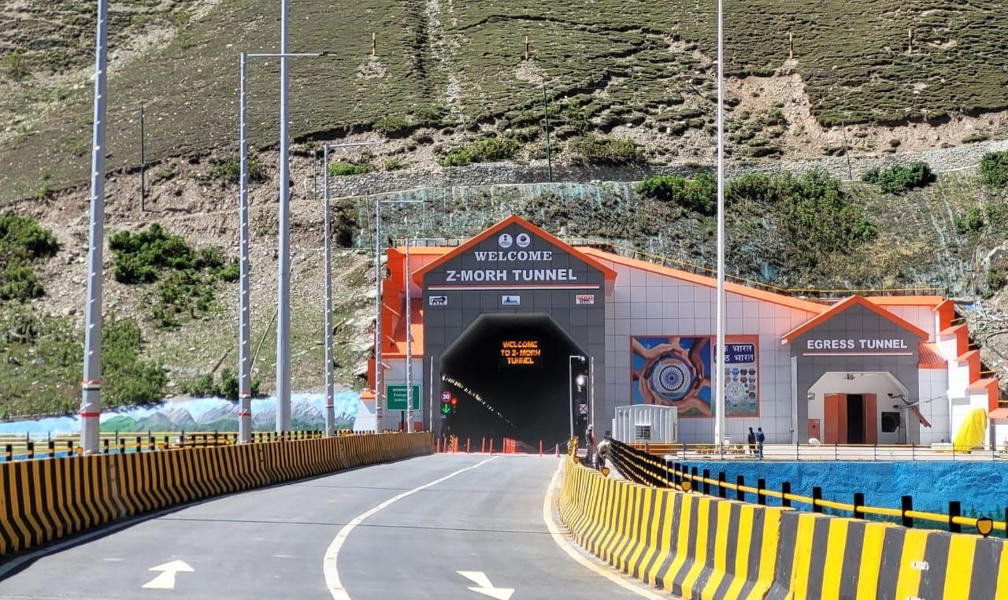- Courses
- ABOUT US
- OUR TOPPERS
- TEST SERIES
- FREE STUDY MATERIAL
- VIDEOS
- CONTACT US
Internationalisation of Rupees
Internationalisation of Rupees

Recently, the Reserve Bank of India (RBI) liberalize FEMA (Foreign Exchange Management Act) regulations, 1999 to promote the use of the Indian Rupee (INR) in cross-border transactions. This move is aimed at increasing the international usage of the INR, a process known as the Internationalization of the Rupee.
|
Foreign Exchange Management Act (FEMA), 1999 The Foreign Exchange Management Act (FEMA), which came into effect on June 1, 2000, replaced the Foreign Exchange Regulation Act (FERA) of 1973. FEMA facilitates external trade and payments while promoting the orderly development of India's foreign exchange market. Key Features of FEMA:
|
Recent Changes in FEMA Regulations by RBI
- Opening INR Accounts Abroad: Individuals residing outside India can now open INR accounts in the overseas branches of Authorized Dealer banks. These accounts can be used to settle both current and capital account transactions with Indian residents.
- Settling Transactions with Other Countries: People abroad can settle transactions with other foreign residents using balances in repatriable INR accounts like:
-
- Special Non-Resident Rupee (SNRR) account
- Special Rupee Vostro Account (SVRAs)
-
- Business Interests in India:
- Any foreign resident with business interests in India can open an SNRR account to conduct genuine rupee-based transactions.
- They can also use balances in these accounts for foreign investment in India.
- Exporters and Foreign Currency Accounts:
- Indian exporters can open accounts in any foreign currency overseas to settle trade transactions, including receiving export proceeds and using them for imports.
Difference between Vostro and Nostro Account
|
Vostro Account |
Nostro Account |
|
|
What is Internationalization of the Rupee?
The internationalization of the Rupee refers to the process of increasing the use of INR in global trade and financial transactions. This includes:
- Promoting INR use in import and export trade.
- Extending the use of INR for other current account transactions.
- Eventually allowing INR usage in capital account transactions as well.
|
Did you know? |
Benefits of Internationalization of Rupee
- Reduces Vulnerability: Reducing dependence on foreign currencies (particularly dollar), it will shield the economy from sudden exchange rate fluctuations, currency crises, and inflationary pressures.
- Limits Exchange Rate Risks: Protection from currency volatility not only reduces the cost of doing business, it also enables better growth of business, improving the chances for Indian businesses to grow globally.
- Reduces Requirement of Forex Reserves: It reduces the requirement to maintain and depend on large foreign exchange reserves in convertible currencies to manage external vulnerabilities.
- Deficit Financing: A globally accepted INR allows the Indian government to issue debt in its own currency to international investors, making it easier to manage fiscal deficits without exchange rate risks.
- Strengthening India's Financial Markets: Greater global demand for INR increases foreign participation in Indian financial markets, such as bonds and equity bringing in long-term investments.
|
What is International Currency? International Currency refers to a currency that is used and held beyond the borders of the issuing country, not just by its residents but also by non-residents. Examples of international currencies include the US Dollar (USD), Euro (EUR), and others.
Determinants of Internationalization of Currency The internationalization of a currency depends on several key factors:
|
Challenges in the Internationalization of the Indian Rupee
- Exchange Rate Volatility: One of the key challenges in the internationalization of the Indian Rupee is the volatility of its exchange rate.
- In the early stages of INR internationalization, fluctuations in its value could increase, as foreign demand for the currency may not stabilize immediately.
- Monetary Policy Dilemma (Triffin Dilemma): The Triffin Dilemma presents a critical issue when a country tries to balance the domestic monetary needs with the global demand for its currency.
- A country may face a situation where maintaining a large supply of currency to meet global needs might undermine its domestic monetary policy, leading to inflation and other economic concerns.
- Restricted Convertibility: While the Indian Rupee (INR) is fully convertible in the current account, it remains partially convertible in the capital account.
- This limited convertibility restricts INR's appeal in international markets, making it difficult for it to become a preferred currency for global transactions.
- Vulnerability to External Shocks: Given the open nature of India’s financial system, with free flow of funds into and out of the country, the INR becomes susceptible to external shocks.
- These shocks can lead to higher volatility in the financial markets, posing a risk to the currency's stability.
- Limited Global Usage: Compared to dominant global currencies like the USD, EUR, and JPY, the INR is not widely used in international trade.
- Furthermore, it lacks deep liquidity in the international foreign exchange markets, restricting large-scale transactions and limiting its acceptance on a global scale.
Steps Taken for the Internationalization of the Indian Rupee
Despite the challenges, India has been actively working towards making the INR more internationally recognized. Several initiatives and strategies have been implemented to promote its global usage.
1. Internationalization of Indian Payment Infrastructure: India has made significant strides in adopting modern payment systems, such as Unified Payments Interface (UPI), which has been adopted in countries like Singapore, France, UAE, Sri Lanka, Bhutan, Mauritius, and Nepal.
2. Memoranda of Understanding (MoU) for Cross-Border Transactions: The Reserve Bank of India (RBI) has signed MoUs with central banks of various countries, including the UAE, Indonesia, and Maldives, to encourage cross-border transactions using local currencies, including the INR.
3. RBI’s Strategic Action Plan for 2024-25: The RBI has unveiled a Strategic Action Plan in its Annual Report for 2023-24. The plan includes several measures aimed at facilitating the internationalization of the INR:
- Opening INR Accounts Abroad: Allowing foreign residents to open INR-denominated accounts.
- Extending INR-Denominated Loans: Enabling the extension of INR loans to residents outside India (PROI).
- Implementation of the SPECTRA Project: A software platform for reporting and approving External Commercial Borrowings (ECBs) and trade credits.
4. Special Vostro Rupee Accounts (SVRAs): The RBI has introduced Special Vostro Rupee Accounts (SVRAs), allowing banks to settle trade with 22 countries using the INR, thereby facilitating INR trade settlement.
5. Other Initiatives:
- Bilateral Currency Swap Agreements
- INR as a Designated Foreign Currency in Sri Lanka
- Issuance of Masala Bonds (Rupee-denominated bonds) to attract foreign investors
Way Forward: Recommendations from the Inter-Departmental Group of RBI
Looking ahead, the Inter-Departmental Group within the RBI has proposed further actions to advance the internationalization of the INR. Here are some of the key recommendations:
1. Strengthening Indian Payment Systems: India should enhance the global adoption of its payment systems such as Real-Time Gross Settlement (RTGS), National Electronic Funds Transfer (NEFT), and UPI, which will make cross-border payments smoother and more accessible.
2. Inclusion of INR in the Continuous Linked Settlement (CLS): The CLS system, which settles foreign currency transactions on a Payment vs Payment (PvP) basis, currently operates for 18 currencies. Including the INR in this system would increase its global usage and improve settlement efficiency.
3. Currency Swaps and Local Currency Settlement (LCS): Currency swap agreements can help stabilize local currencies, protect businesses from currency risks, and reduce transaction costs, making INR a more attractive currency for cross-border transactions.
4. Efforts to Include INR in the Special Drawing Rights (SDR) Basket: The SDR is an international reserve asset created by the IMF. Currently, the SDR basket includes five major currencies: the U.S. dollar, Euro, Japanese yen, Chinese renminbi, and British pound. Including the INR in the SDR basket would elevate its status in the global financial system.
5. Strengthening Financial Markets: India must enhance access for foreign investors to INR-based assets by harmonizing KYC norms between the RBI and SEBI. Additionally, developing a 24x5 INR market and including Indian government bonds in global bond indices will help attract global investments, stabilize INR flows, and reduce borrowing costs.
|
Also Read |
|
| FREE NIOS Books | |
India Secures 14.3% of Global Remittances in 2024

